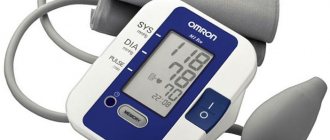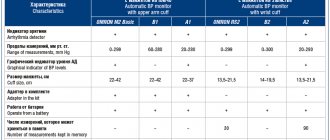About EFI: what measurements need to be taken in each building
How to protect yourself and other people from accidents, fires and electric shocks? What types of measuring work exist? What is the frequency of electrical measurements and why is it better to entrust this matter to specialists?
Read all the details in our material. Electrophysical measurements (EPM) are a mandatory procedure for measuring the parameters of various power consumption systems and electrical equipment.
The task of conducting EFI is to detect possible malfunctions that may lead to consequences over time. Faulty electrical wiring may cause fire and accident.
Therefore, it is very important to keep electrical equipment and electrical installations under constant supervision of specialists. Inspection must be carried out in all buildings.
Testing laboratory engineers use special instruments to identify areas of the electrical network that are malfunctioning. Our laboratory performs a range of electrophysical measurements, which include:
Insulation resistance measurement
Insulation resistance is one of the most important points in characterizing the insulation condition of electrical equipment. This parameter is carefully checked by any inspection.
Checking the cable insulation resistance determines the integrity and actual condition of the electrical wiring. This procedure is also aimed at avoiding malfunctions of electrical appliances and other electrical devices.
In almost all cases, insulation resistance is measured with a megohmmeter. Our testing laboratory has digital instruments that most accurately determine the insulation resistance value.
Checking the insulation resistance with a megohmmeter is carried out in the following order:
- Measuring the insulation resistance of connecting wires. This value must be greater than or equal to the upper limit of the megohmmeter.
- Determination of peak measurement value
- Checking the absence of voltage in the line
- Disabling all reduced insulation devices
- Grounding the circuit under test at the time of connecting the megohmmeter
- Turning on the device, recording the resistance on the megohmmeter scale
- After completing the measurements, the accumulated charge is removed by applying grounding
So, we talked about the method of checking insulation resistance with a megohmmeter, and now let’s talk about the frequency of its measurement.
The insulation resistance must be checked at least once every 3 years.
However, the person responsible for electrical equipment, knowing his systems well, can set by order a different periodicity of the system and take measurements more often.
Also, measurements are carried out more often at outdated facilities and facilities that require increased security (hospitals, schools, kindergartens). It’s better to play it safe and do the procedure once a year.
In wet rooms (baths, laundries), such measurements must be carried out once every six months, or even more often. But elevators, cranes and other lifting equipment should be checked annually.
Measuring the resistance of grounding devices
Grounding resistance is also called resistance to the spreading of electric current in the ground, passing to it through the ground electrode. The resistance measurement value is Ohm.
And in our case, it should have the lowest possible value, and ideally, no more than 4 Ohms.
The latter option will guarantee the absence of any resistance in the event of the passage of electric currents and their absolute absorption by the ground.
The ground loop is a complex structure consisting of grounding electrodes connected to each other. It is a guarantee that no one will get an electric shock during the operation of any equipment. The ground loop can be used both in a private home and in any enterprise.
This type of measurement gives confidence that a fire will not occur due to the circuit and your property will not be damaged. Checking the ground loop can be carried out with a megohmmeter: such diagnostics are usually done at the final stage of building arrangement or as a routine check.
You also need to talk about equalizing the potentials of metal devices. This is done so that various pipes, electrical appliances and some household appliances do not have potential differences. Otherwise, there may be cases of electric current leakage from the electrical wiring of metal objects in the building.
Measuring the resistance of grounding devices should be done at least once every 6 years, and, for example, checking lightning protection should be carried out once a year before the onset of a thunderstorm.
Checking the connection of grounding conductors with grounded elements
The connection of grounding conductors with grounded elements is a system designed to protect against electric shock. Often the lack of such protection leads to equipment failure or harm to human health.
To ensure a long “life” for the equipment, testing the strength of conductors between grounding conductors and grounded elements should be carried out once every 6 years.
To check the connections of grounding conductors with grounded elements, you need to contact specialized companies that have the appropriate accreditation.
Checking the phase-zero circuit
By checking the phase-zero circuit, specialists determine the correct choice of circuit breakers. This procedure is carried out to ensure that all equipment immediately disconnects the circuit at the moment of a sudden voltage drop.
The TCP states that the phase-zero circuit must be checked at least once every 6 years, and also mandatory upon acceptance into operation.
An RCD is a residual current device that protects people from electric shock in the event of an electrical equipment malfunction. Another purpose of the RCD is to prevent fires caused by electrical wiring fires.
After carrying out any electrophysical measurements, the client is given a corresponding protocol, which indicates the number and parameters of measurements.
The results of electrophysical measurements are recorded in a technical report, which is handed over to the customer after completion of the work.
The report is drawn up according to the established template and consists of the required number of protocols. The form of the protocols was approved by the National Accreditation Body and agreed with Energonadzor.
If specialists detect malfunctions and violations, then a defect report is drawn up.
You can find out about the frequency of electrophysical measurements (EPM) at enterprises/residential buildings in Minsk and other cities of the Republic of Belarus from the list that we have compiled for you. This information is compiled in accordance with the TCH and is relevant today:
- Checking the insulation resistance - once every 3 years, in all rooms with high humidity and in agricultural enterprises - once a year
- Measuring the resistance of grounding devices - at least once a year, as well as every time after any repair work
- Checking the connection of grounding conductors with grounded elements - once every 6 years
- Checking the phase-zero circuit – once every 6 years and mandatory upon commissioning
The cost of services and the duration of the EFI always depends on various factors: from the volume of work to the remoteness of the site. We are ready to send you a detailed commercial offer immediately after calling our manager.
2010-2020 © Service Buy Group of Companies
Source: https://Service247.by/vopros-otvet/vse_podrobnosti_pro_efi/
Algorithm for interaction with the laboratory
Before starting work, you must consult with a company employee and determine exactly what laboratory services you need. For routine monitoring of the operation of the electrical network, a contract is concluded for certain types of services - and after repairs, it may be necessary to conduct extended tests. The list of services will necessarily be specified in the agreement signed between the enterprise and ETL. The cost of the work and the date of measurements will also be indicated there. On the appointed day, ETL representatives visit the site and take the necessary measurements. Laboratory employees must be granted access to any premises of the institution. Based on the results of the work, a technical report is drawn up on the condition of the electrical equipment and network of the enterprise.
Tests and measurements in electrical installations
Any power supply network for a residential building, business center or industrial building is a collection of supply wires, protection devices and points of consumption.
Each of these components requires periodic inspection to confirm suitability for further use.
Tests and measurements in electrical installations up to 1000 V, which are carried out by our electrical laboratory, make it possible to guarantee safety when commissioning a new distribution network, as well as reduce the likelihood of accidents when using the existing power supply scheme to consumers. All measurements are carried out by qualified specialists using certified domestic and foreign instruments, which indicates the high quality of the services provided and increases confidence in the results obtained.
What is included in the set of measurements?
Comprehensive testing of electrical installations includes the following work:
- Full inspection of the facility;
- Measuring the resistance of the grounding device;
- Checking the presence of connections between the grounding loop and grounded network elements;
- Wiring insulation test;
- Loading of circuit breakers and residual current devices (RCDs);
- Phase-zero loop measurement.
Checking the RCD response current
At the first stage, specialists conduct a thorough inspection of all visible connections and assess the condition of the insulation of wires and cables. This operation allows you to identify the problem area at an early stage without the use of special equipment.
Obvious signs of a malfunction are a change in color or melting of the wire insulation, as well as a violation of the integrity of the place where the cable is connected to the machine, which indicates unsatisfactory contact at the connection point and the occurrence of transient resistances.
For the safe use of a power facility and all consumers connected to it, it is necessary to have a grounding loop consisting of artificial vertical and horizontal grounding conductors.
Grounding is necessary to create a path for current flow that occurs during emergency operation.
The resistance value is regulated by PTEEP and the lower it is, the higher the likelihood of protecting people and technological equipment from electric shock.
The next logical stage of testing electrical installations is to check the presence of connections between the grounded equipment and the grounding device.
When carrying out this measurement, the compliance of the connection diagram of all consumers, the presence of physical contact of the conductors with the circuit, and the absence of voltage on the equipment housings are checked.
After taking measurements, we can talk about the safety of further operation of the facility.
Testing the insulation of cables and wires is a mandatory item during electrical measurements. This operation allows you to determine whether the insulation characteristics of the wiring comply with standard values.
Tests are carried out both for the external insulation and for the insulation between each individual conductor.
If the results are positive and the insulation characteristics are normal, then this indicates safe use of the distribution network.
Measurement of the phase-zero loop is carried out to confirm the functionality of the circuit breakers during short circuits.
During the measurements, the maximum fault current for a selected group of consumers is determined, which is compared with the time-current characteristic of the circuit breaker reflected in the technical data sheet.
If the obtained value is within the shutdown zone, then the machine will provide reliable operation and protection against electric shock. Otherwise, this unit must be replaced.
Loading of automatic devices and RCDs is carried out after installation in the distribution board. This operation is necessary to confirm the characteristics declared by the manufacturer and to search for defective protection devices. Such tests are relevant at the initial stage of installation of the distribution network.
Measuring the current flow of the ground loop
Test frequency
The frequency of testing electrical installations is regulated by regulations and is at least once every three years for conventional installations and annually for external networks and objects recognized as dangerous.
We recommend testing be performed annually to ensure safe operation of the power facility and to protect personnel from electrical shock.
The result of comprehensive measurements and tests is a technical report, which reflects all stages of verification, as well as identified violations and measures to eliminate them. All work on measurements and processing of the received data is carried out as quickly as possible, taking into account the requirements of current legislation, which guarantees the passage of any inspections by authorized supervisory authorities.
Source: https://elektrolaboratoriya.com/elektrolaboratoriya-ispytaniya/ispytaniya-i-izmereniya-v-elektroustanovkah.html
Fines and punishments for lack of inspections
Rostechnadzor inspectors have the right to conduct an inspection of the electrical network of small and medium-sized businesses, as well as check the submitted documentation on the safety of electrical equipment.
Untimely verification of the security of networks and electrical installations or its complete absence leads to fines or a complete shutdown of the enterprise. For example, the electrical engineering laboratory of Perm calls for a responsible attitude to the orders of Rostekhnadzor and timely implementation of scheduled preventive work.
Note! Control over the safety of electrical installations in our country is entrusted to independent electrical laboratories; Planned safety checks of power plants cannot be carried out by the enterprise!
The most common violation according to Rostechnadzor statistics is the lack of a protocol for checking the technical condition of the power plant. Failure to submit this document is equivalent to a violation of the operating rules and, according to Art. 9.11 of the Code of Administrative Offences, entails punishment:
- for officials a fine of up to 2 thousand rubles;
- for individual entrepreneurs up to 4 thousand rubles;
- for enterprises and organizations - up to 40 thousand rubles or suspension of activities for 90 days.
To avoid financial penalties, you should regularly conduct appropriate laboratory tests and submit the necessary documents to control authorities. If the company is not able to conduct tests and properly draw up a report, then an electrical laboratory can provide this service.
What are electrophysical measurements
: 5 / 590What are electrophysical measurements
Measurements play a significant role in human life. Every day, each of us is faced with measurements, starting with estimating sizes and distances by eye, and ending with high-precision measurements in complex technological processes in production. Among all other measurements, electrophysical measurements (EPI) occupy a special place. Why? Let's find out the answer to this question.
The purpose of electrophysical measurements is to obtain information about the resistance of electrical equipment and electrical installations to ensure safe working and resting conditions for humans. It should be noted separately why these measurements are called electrophysical.
The fact is that materials and substances in the world can be divided into two groups: with high electrical resistivity and with low. The former conduct electricity poorly, the latter conduct electricity well.
Accordingly, materials with high resistance (above Ohm m) - dielectrics - are excellent for insulation, or protection against electric current. Materials with low resistance (less than Ohm m) - conductors - conduct current well and are widely used as conductors.
During EPI, the physical parameters of various materials, substances and equipment are studied using electrical measuring instruments, which is why the measurements in question are called electrophysical. For example, it conducts the following types of EFI:
– measurement of insulation resistance;
– testing the grounding circuit (phase-zero circuit) in electrical installations with voltage up to 1 kV with a solidly grounded neutral;
– measurement of resistance of grounding devices;
– measurement of lightning protection resistance;
– checking the presence of a grounding circuit, i.e. checking the connections of grounding conductors with grounded elements with measuring the contact resistance of the contact connection;
– checking the performance of the RCD and its response time;
– measurement of soil resistivity;
– testing of circuit breakers (automatic machines);
– loading of automatic machines and differential circuit breakers (differential circuit breakers);
– testing of personal protective equipment (PPE).
All these types of measurements are aimed at ensuring a high level of electrical safety. The consequences of untimely EFI or their complete absence can be considered using only two examples.
On February 16, 2011, while determining the cause of the ventilation system malfunction, an electrician died due to electric shock. The injury occurred when the hand touched a metal electric motor on one side and a metal pipeline on the other.
The fatal factor turned out to be the presence of tension on the engine housing due to the fact that the housing was not zeroed. On August 5, 2016, a cleaner died while leveling grain in a tractor trailer. Death occurred as a result of touching metal parts of the pneumatic loader that were not zeroed.
Voltage on the conductive parts appeared due to a violation of the insulation of the phase wire and its contact with the conductive parts of the installation.
Such situations can be avoided by periodically conducting electrical measurements.
Over time, the properties of insulation deteriorate for various reasons: due to its natural aging, mechanical wear or damage, operation at elevated temperatures or in an aggressive environment, high humidity or excessive contamination of the insulation.
In addition, the insulation properties may deteriorate due to partial discharges occurring in gas inclusions in the thickness of the insulation. The same can be said about materials used as current conductors.
If the installation is poor or works in an environment with unfavorable conditions, the metal of the conductor may be subject to corrosion, and the contact resistance at the junction of the conductors may increase. For example, aluminum electrical wiring tends to become coated with an oxide film.
Over time, due to the oxidation of aluminum, the thickness of the oxide film increases and the effective cross-section of the conductor decreases, its resistance increases, which leads to increased heating of the wire. Personal protective equipment such as dielectric gloves and boots can also be damaged during use. It is these reasons that determine the existing frequency of measurements, which is enshrined in the “Rules for the technical operation of consumer electrical installations” (TKP-181-2009).
Electrical measurements are initially carried out during acceptance tests, periodically (operational measurements) are carried out in production premises, rooms with high humidity, in retail areas, office and residential buildings and other similar premises where there is a possibility of electric shock.
The TMRsila-M laboratory is an accredited laboratory, which guarantees the accuracy of measuring instruments, the competence of specialists conducting measurements and preparing technical reports, and gives the right to conduct tests in electrical installations.
in social networks:
Social buttons for Joomla
Source: https://tmr-power.com/stati/chto-takoe-efi
Why is a technical report needed?
The technical report and measurement protocol are the basic reports of the electrical laboratory engineers who carried out electrical measurements and testing of the electrical equipment. Documents of the established form are drawn up by ETL and provided to the customer.
The technical report consists of:
- title page, which indicates the customer, performer, date of measurements;
- content;
- an explanatory note indicating the purposes of the measurements, the characteristics of the construction site where the measurements were taken, as well as a list of tests performed;
- programs of measurements performed, test results;
- measurement protocol (filled out on a standard form, contains information about the methods of testing and the step-by-step process of work);
- indications of identified defects and shortcomings that may affect the safe operation of the network and power plant;
- conclusions of ETL specialists on the safety or unsafety of operating the network and power supply, compliance of the equipment being tested with the requirements of the Electrical Electrical Regulations, GOST, PTEEP.
- copies of the certificate of registration of the electrical laboratory, which indicates its right to conduct electrical tests and draw appropriate conclusions.
Practical benefits of a technical report
The main purpose of the technical report is to provide an independent expert assessment of the safety of the electrical equipment, installations and electrical network used. This document documents the compliance of the technical characteristics of the equipment with the requirements set out in the PUE, PTEEP and others.
At a practical level, analysis of a technical report allows you to solve the following problems:
- quick inspection by the authorities of Rostekhnadzor, Rospozhnadzor and others;
- reviewing the costs of operating electrical equipment in terms of replacing wiring, switches, panels and other things;
- avoidance of penalties and shutdown of the enterprise;
- the possibility of expanding production without replacing equipment, if the power and technical characteristics of the power plant allow this.
Note! In the event of a fine or other penalty imposed by supervisory authorities, the Technical Report may be presented in court to appeal an unlawful decision, as objective and impartial evidence of the serviceability of all components of the electrical network.
Timing of electrical tests
There are no specific deadlines for submitting a technical report (TR) on tests. But the laboratory of electrical measurements, as a responsible executor, submits maintenance and related documents strictly on the date specified in the contract. The usual period for compiling a report lasts 2-3 business days, in some cases (complex equipment, large volumes of work), the period for compiling will be extended. For small power plants and electrical networks of small buildings, ETL presents the test results the very next day. An urgent examination of the condition of the power plant and electrical wiring is also possible at the request of the customer.
The contract may stipulate conditions for testing: night time, non-working days, etc. This is done so as not to affect the workflow or reduce production volumes.










